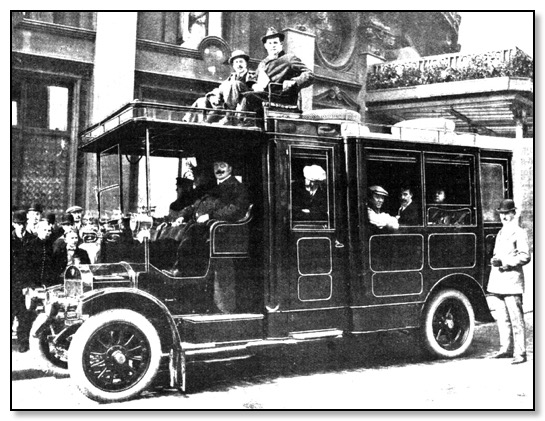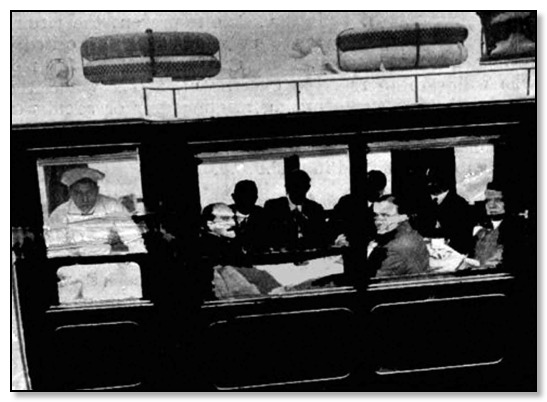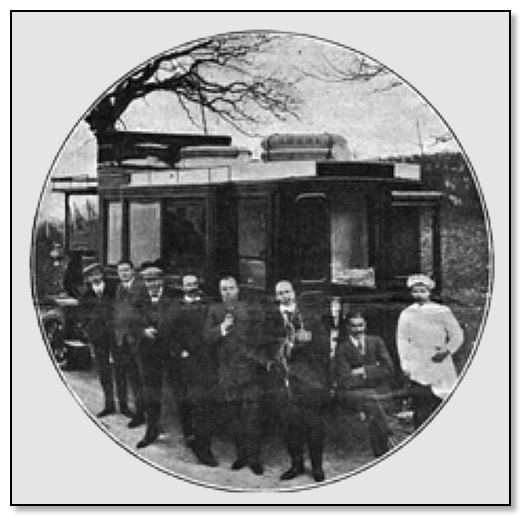MARCH 1910
Austin Motor Caravan
Initial run of the Austin motor caravan belonging to Mr Arthur du Cros, MP. It conveyed a party of seven to Brighton and back, and luncheon was served en route.
Initial run of the Austin motor caravan belonging to Mr Arthur du Cros, MP. It conveyed a party of seven to Brighton and back, and luncheon was served en route.
The lighter and faster type of, passenger and goods-carrying motor vehicles is likely to prove one of the most popular and widely used in the near future. Both methods and manners of travel are changing, and the expedition by which Mr Arthur du Cros, MP, inaugurated the touring career of his Austin Caravan was decidedly interesting. Those of us who journeyed to Brighton on that dark November day in 1896, when the motor car first took its place in the line of traffic in this country, were sanguine persons – optimists mostly. But none gave utterance to the view that fourteen years later some of those pioneers would be having their luncheons cooked and served in a motor-car travelling at twenty miles an hour. And yet such actually took place last week.
A start was made at 11 am from the entrance to the Motor Club at Coventry Street, London W, the intention being to journey to Brighton, taking a hot meal en route. The party that boarded the caravan comprised Messrs Harvey du Cros, jun, W du Cros, D’Arcy Baker, C Jarrott, W A Turpin, Charles Pinnock and Eustace Gray, whose camera was later pointed at the other travellers, with the result that we illustrate. The route taken was via Westminster, Brixton, Reigate, Horley and Crawley, where a halt was called at the historic George Hotel, the stopping place of the coaches that started from the Golden Cross, at Charing Cross, in pre-Victorian days. It was after speeding from Crawley that the party enjoyed the lunch that had been cooked on board. No heed was taken of the hills and inequalities of the road, and the whole trip was accomplished on top gear excepting for one or two of the sharpest rises, which were taken on third speed.

Feeding en route
Naturally the presence of the Austin Caravan on the road was the subject of much speculation on the part of the countyside. People wondered at the moving kitchen and dining room as though half expecting to be told that the ardent motorists were eating policeman pie. After a pleasant run of three hours the huge vehicle strode on to the Front, a great crowd assembling as it passed beyond the Old Ship Hotel – known as the Ship Tavern when Miss Burney travelled to Brighton in a coach with four horses and in the company of Mr, Mrs and Miss Thrale. It was in 1779 that she made that eventful journey – but not taking meals as she travelled. They went from Streatham by the Reigate and Cuckfield route, taking tea at the King’s Head or the Talbot at the latter place and dining in state at Brighton itself.
Nowadays, however, the conditions of travel have changed, and when the septette of cheery mortals took soup with no more inconvenience than would be experienced in a railway train, they could only remark, ‘there’s nothing Du Cros about.’ There was no swaying, the liquids remained still until purposely raised – and lowered – and the demonstration should prove to those who love travel in strange places that the motor-car can be adapted freely for any convenience. Just as the Automobile Association has shown the possibility of conveying a regiment of Guards expeditiously across country, so the Austin Caravan has established the possibilities that are now within reach of the Commissariat Corps of the military authorities.

Exercise after Luncheon

